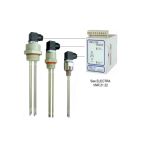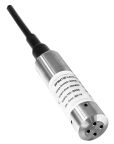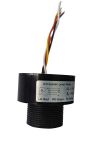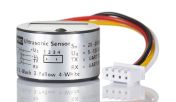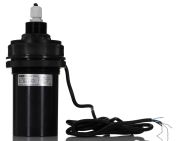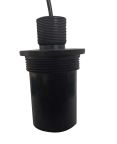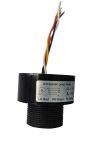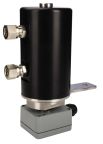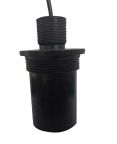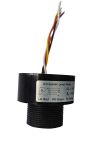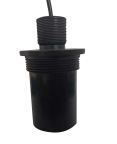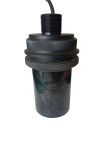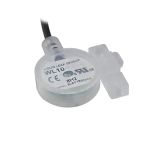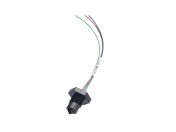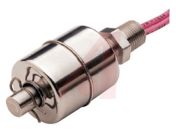Level Sensors
Level sensors are essential components in various industries for monitoring and managing liquid levels in containers, tanks, and silos. These sensors ensure accurate measurement and control, preventing overflows and maintaining optimal operation. They play a critical role in automation and safety processes by providing reliable data on liquid levels. From manufacturing to water treatment, level sensors are indispensable for efficient and safe operations.
What Are Level Sensors?
Level sensors monitor, maintain, and measure liquid levels to determine how full or how empty a container, tank or silo is. These components provide an output electrical signal at predetermined levels to communicate when to open or close control valves.
How Do Level Sensors Work?
There are various types of level sensors, each using a different method to measure the level of liquid within a tank or container. This results in different technologies and processes being employed to achieve accurate measurements.
Level sensors are generally categorised as either contact or non-contact, based on their specific type. Here are the methods used to determine fluid levels by sensor type:
- Optical level sensors: Utilise visible, laser, or infrared light.
- Capacitive level sensors: Use non-contact sensing fields.
- Conductive level sensors: Employ electrical contact outputs.
- Vibrating level sensors: Rely on high-frequency vibrations.
- Ultrasonic level sensors: Generate ultrasonic pulses.
- Microwave level sensors: Use electromagnetic energy.
Level Sensor Types
The choice of level sensor is usually determined by which substance is being measured, the environment in which the sensor is to be used and in which position the sensor needs to be mounted. Also, the application will determine the measurement principle used, such as capacitive, guided wave radar or hydrostatic level measurement. The most common types of level sensors are:
Capacitive Level Switches
Capacitive level switches provide a basic full/empty level indication determined by the mounting position of the sensor. This type of switch is non-contact and uses a sensing field to determine liquid levels. Capacitive sensors provide accurate switching even with heavy residue build-up.
Vibrating Level Probes
Vibrating level probes use a rod or a fork that constantly produce high-frequency vibrations. When the vibrating probe comes into contact with the medium, the vibration changes and the vibrating level switch outputs a switching command. Vibrating level switches are used as overfill protection devices or low-level indicators in liquids and granular or powder bulk solids.
Conductive Level Switches
Conductive level switches are sensors that use stainless steel probes with an electrical contact output to measure a specific liquid level. It is used with a level control relay to set and monitor each probe. Applications include ponds, reservoirs, sumps, pharmaceuticals, closed vessels and open tanks.
Ultrasonic Level Sensors
Ultrasonic level sensors produce ultrasonic sound pulses that are reflected by the surface of a liquid medium. The time travelled by the ultrasonic pulse is calculated by the sensor which then determines the distance of the liquid to give an accurate fill level. Its response is influenced by turbulence, pressure, moisture, and temperature. They are used in managing water levels in tanks and treatment plants, as well as industries such as chemical processing, where they provide non-contact measurement to maintain optimal fluid levels.
Applications of Level Sensors
Level sensors are vital in various industrial applications, ensuring efficient and safe operations across different sectors:
Manufacturing and Process Industries
In manufacturing, level sensors monitor the levels of raw materials, chemicals, and finished products in tanks and silos. Along with pressure sensors, they ensure that production processes run smoothly without interruptions due to material shortages or overflows. For instance, in the food and beverage industry, ultrasonic level sensors monitor ingredient levels in mixing tanks, maintaining product consistency and quality.
Oil and Gas Industry
In the oil and gas sector, level sensors are critical for monitoring storage tanks, separators, and pipelines. Guided wave radar level sensors are often used due to their ability to measure accurately in high-pressure and high-temperature environments. These sensors help prevent spills, optimise inventory management, and ensure safety compliance.
Automotive Industry
The automotive industry uses level sensors to monitor fluids such as oil, coolant, and fuel. These sensors help maintain optimal performance and safety of vehicles by providing accurate fluid level measurements.
Water Treatment
Level sensors in water treatment plants monitor the levels of water and chemicals in tanks and reservoirs. They play a crucial role in maintaining the balance of treatment processes and ensuring a consistent supply of clean water.
Pharmaceutical Processes
In pharmaceutical manufacturing, level sensors ensure precise measurement of liquid ingredients and chemicals. This accuracy is critical to maintaining pharmaceutical quality and consistency. Capacitive level sensors are commonly used in this sector due to their high accuracy and ability to work with various media. These sensors help maintain strict quality control and ensure proper mixing ratios in drug production.
Power Generating Plants
Power plants use level sensors to monitor the levels of water, fuel, and other liquids in various tanks and systems. These sensors help maintain the efficiency and industrial workplace safety during the power generation processes.
Agriculture and Irrigation
In agriculture, level sensors play a vital role in irrigation systems and storage silos. Ultrasonic water tank level sensors monitor water levels in irrigation tanks, ensuring efficient water usage and preventing crop damage due to over or under-watering. In grain silos, vibrating level sensors detect when silos are full, preventing overflow and product waste.
Frequently Asked Questions About Level Sensors
How accurate is the liquid level sensor?
Liquid level sensors are generally accurate, with some models providing measurement accuracy within a millimetre. The specific accuracy, however, depends on the sensor type and application environment. For instance, ultrasonic level sensors are highly accurate in clean, stable environments but might be affected by factors such as turbulence, pressure, and temperature fluctuations. Capacitive and conductive sensors also offer high accuracy but are best suited for specific types of media and conditions.
Overall, the accuracy of a liquid level sensor is contingent on choosing the right sensor type for the application, considering the environmental conditions, and ensuring proper installation and maintenance.
Is the water level sensor waterproof?
Yes, water level sensors are designed to be waterproof to function reliably in wet environments. These sensors are typically encased in waterproof materials, such as durable plastics or stainless steel, to prevent damage from water ingress and ensure longevity. The waterproof design allows them to operate effectively in applications such as water tanks, reservoirs, and wastewater treatment plants, where they are constantly exposed to moisture and submerged conditions.
And while they do have a robust design, you don’t have to worry about the price of these sensors. At RS, we provide products that are competitively priced, offering excellent value for their durability and performance.
What are the advantages of a liquid level sensor?
Liquid level sensors offer many advantages for a wide range of industries. Its major benefits are providing precise measurement and real-time monitoring of liquid levels to prevent overflows and dry runs. This helps improve the safety and efficiency of many industrial processes.
Additionally, liquid level sensors contribute to cost savings by reducing manual monitoring and maintenance efforts. Their ability to provide accurate data helps in optimising resource use, minimising waste, and ensuring compliance with regulatory standards.
Delivery Information
RS provides dependable shipping with our next working day deliveries or deliveries on a specific day within the next 12 months. We can also consolidate your shipments should you have multiple orders placed throughout the day so that they can be packaged and delivered as one. However, kindly note that orders with hazardous products, like lead acid batteries, or heavy products may be delivered by sea and be delivered within 40 business days.
For more information, feel free to check out our delivery guidelines.
